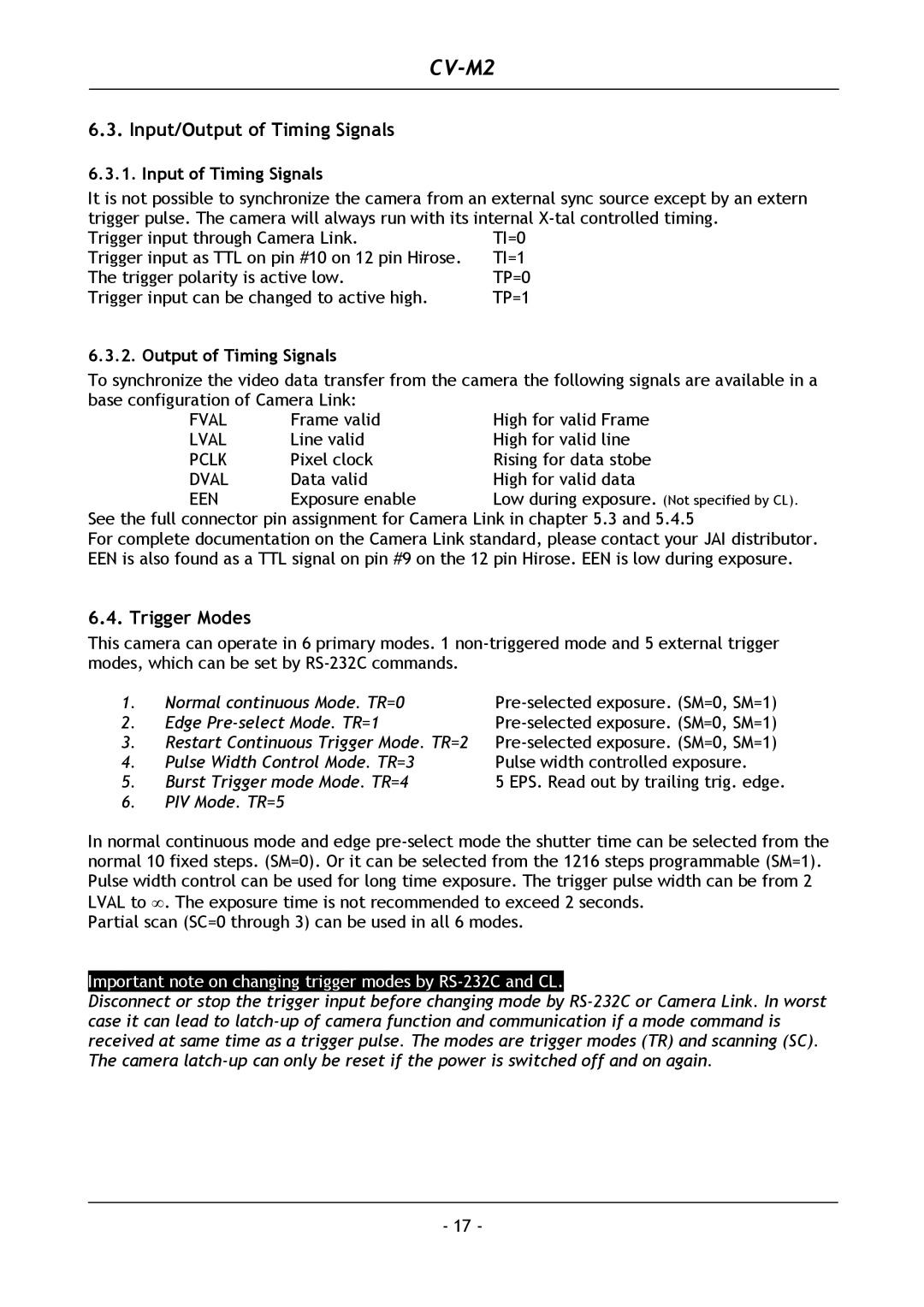CV-M2 specifications
The JAI CV-M2 is an advanced and versatile camera model designed for demanding imaging applications in industrial, scientific, and security sectors. This camera is part of JAI's robust lineup of machine vision solutions, emphasizing high performance, reliability, and adaptability in diverse environments.One of the standout features of the CV-M2 is its high-resolution sensor. Equipped with a 5-megapixel CMOS sensor, it delivers exceptional image clarity and detail. This capability makes it suitable for applications where precision is critical, such as quality control in manufacturing or intricate research work. The sensor's design minimizes noise levels, ensuring clear images even in low-light conditions, which enhances its versatility.
The CV-M2 supports multiple frame rates, making it adaptable to various application requirements. It can achieve frame rates of up to 60 frames per second, allowing for smooth video capture and the ability to capture fast-moving subjects without motion blur. This attribute is particularly beneficial in dynamic environments like assembly lines or during scientific experiments.
Connectivity options are another highlight of the JAI CV-M2. It features a range of standard interfaces including GigE Vision and USB3 Vision, which allow for easy integration into existing systems and provide versatility for different application needs. These interfaces support long cable lengths, ensuring flexibility in camera positioning without compromising on image quality.
In terms of durability, the CV-M2 is built to withstand harsh conditions. Its robust housing is designed to protect against dust and moisture, making it a reliable choice for industrial settings where environmental factors can be a concern. This durability does not come at the expense of weight, as the compact design ensures easy installation and maneuverability.
Further enhancing its usability, the JAI CV-M2 features extensive software support, compatible with various machine vision software packages. This compatibility simplifies the integration process and allows users to leverage powerful image processing tools for real-time analysis and decision-making.
Overall, the JAI CV-M2 stands out as a reliable and high-performing camera solution. With its blend of high resolution, fast frame rates, robust connectivity, and enhanced durability, it meets the needs of a diverse range of applications, making it a valuable asset in any imaging setup. Its commitment to quality and performance continues to solidify JAI's reputation as a leader in the machine vision industry.

